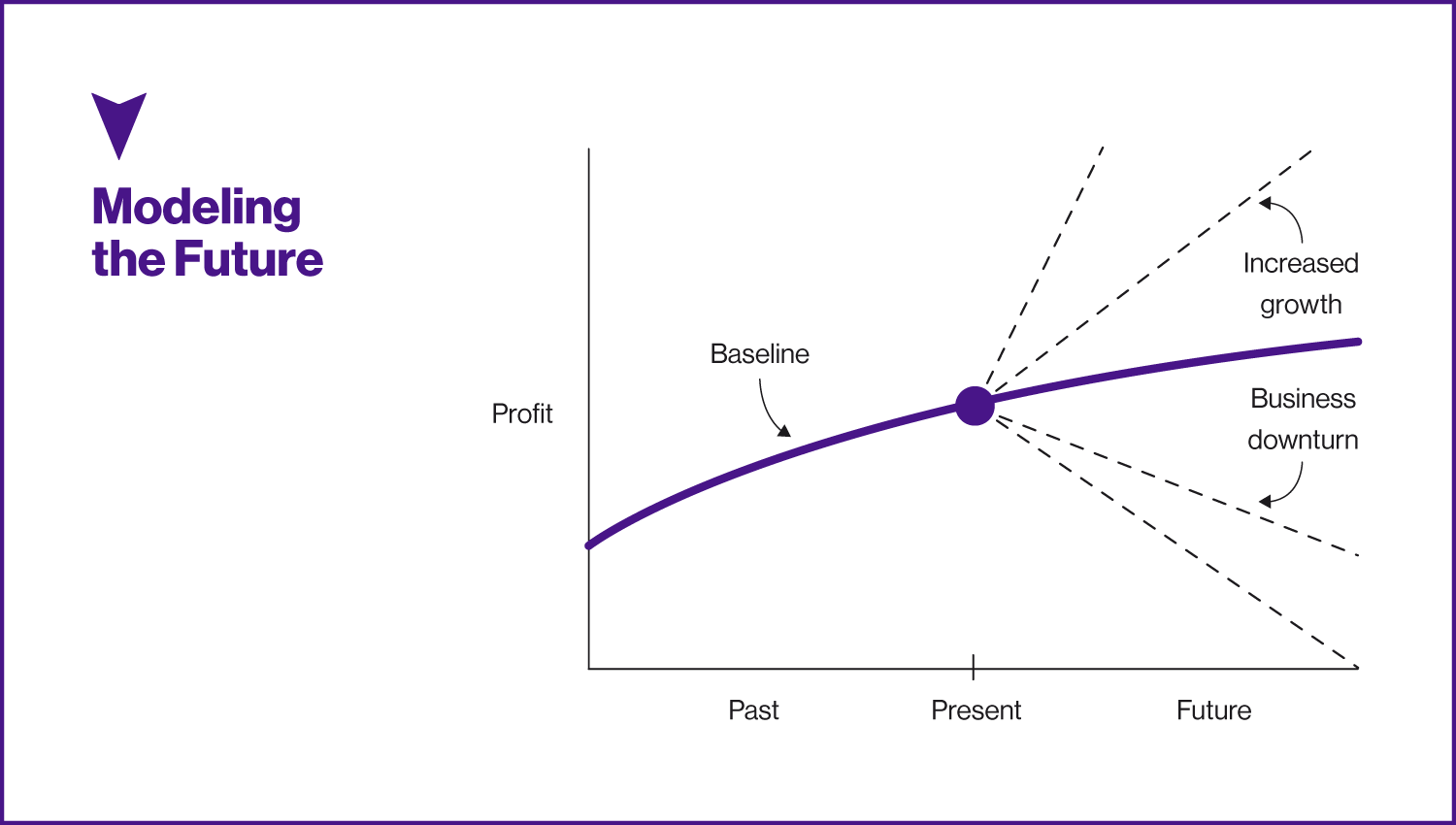Like many accounting and investment tools, the amount of math involved in financial modeling can seem daunting. At the core, the concept is simple: financial models incorporate historical data, present cash flow and balance sheet positions, and a series of future-based assumptions to project an organization’s performance into the future.
In short, it’s a decision-making tool.
In this article, we’ll walk you through the basics of financial modeling so you can incorporate quality financial analysis into your business planning process.
Table of Contents
For help constructing financial models and other accounting necessities, indinero’s fractional CFO services are the perfect solution. We provide expert guidance at the cost of a novice in-house employee.
Financial Modeling Basics
In our article about bookkeeping vs. accounting, we explain the difference between these two services: Bookkeeping services collect and organize information while accounting services help businesses creatively analyze data to help entrepreneurs make decisions; constructing financial models is where the expertise of accountants shines.
When an expert puts together a model, they’ll go through the following steps:
- Construct a snapshot of the present moment with a combination of income statements, balance sheets, cash flow statements, and debt schedules.
- Gather past iterations of the same information and relevant market movements to establish a trend line for your business.
- Generate forward-looking predictions by applying both conservative and ambitious assumptions to the status quo.
When they’re finished, projections will resemble something like this:

Keep in mind that forward-looking projections are only rough estimates. The past is a solved matter; painting that picture is as simple as gathering information and inputting it into a spreadsheet. Estimating future finances is an art, necessitating both mathematical expertise and creative thinking.
From a graphical standpoint, a model’s looks depend on its use case. It may be a simple Excel-generated graph or just numbers on a spreadsheet for internal purposes. Businesses may create a stylized graphic if they plan to use the model to pitch investors or creditors.
Types of Financial Forecasting Models
In our previous graphic, we chose to use profit as an example. However, any number of financial metrics can be modeled. Here are some financial modeling example use cases:
- EBITDA
- Revenue
- Cost of Goods Sold (COGS)
- Margin
- Operating Expenses
- Cash Flow
- Market Share
- Lifetime Value of a Customer
- Break-Even Analysis
- Stock Price
One particularly popular forecasting technique is a Monte Carlo Simulation, which businesses create to predict possible outcomes of an uncertain event. Financial planners use it to model potential retirement assets for clients, and businesses can also apply the technique to their finances.
Think of Monte Carlo Simulations like a random number generator. You’ll use historical information to generate your best guess for % change after an event and the likely standard deviation around that assumption. Then, the simulation runs many thousands of times, generating a picture with probable upper and lower bounds as well as the most likely outcomes.
By changing the assumptions, businesses can get a sense of how different conservative and risky scenarios will play out.
Using Financial Models for Decision-Making
Constructing financial models is challenging; effectively incorporating them into your decision-making process is even harder. We’ll provide some potentially worthwhile insights to make this analysis less overwhelming.
First, the simple act of building a model is instructive; it reduces reliance on gut feelings and reveals information you might have overlooked otherwise. The logic behind writing a business plan is similar. Having the plan exclusively in mind might feel easier, but seeing it on the page and sharing it with others can also generate valuable feedback.
However, the best use of a financial model is to evaluate risk & reward. Here are some questions to ask after constructing a model:
- If I invest $10,000, what’s my breakeven point?
- What level of risk do my decisions pose?
- What return do I need to generate to justify those risks?
- How is my business positioned to weather a market downturn?
- What contingency plans can I use to mitigate the risk of unforeseen events?
- How confident am I in the assumptions I’ve made building this model?
- What areas of my business offer the most potential for return?
- Where are the most significant costs in my business?
- What KPIs should I monitor to track the progress of my decisions?
You may have noticed that most of these questions are qualitative rather than quantitative. That’s because numbers provide a foundation, but the success of strategic decision-making relies on interpreting objective information to make subjective judgments.
Challenges of Financial Models
It can be tempting to look at a model and place too much faith in its predictions. However, to avoid potential missteps, keep the following in mind:
- The model is only as good as the data used to create it. If inaccurate information is used to generate predictions, the results will also be inaccurate. Use a system for tracking business expenses to ensure the data you use for modeling is as accurate as possible.
- Models rely on assumptions. Be careful to base your decisions, especially risky ones, on your financial model’s conservative estimates.
Conclusion
A financial model is a powerful decision-making tool, bridging historical data and future projections. Whether you’re in real estate, SaaS, or startups, understanding the basics is crucial for effective business planning.
Don’t just see it as math; it’s a creative process that involves past trends, forward-looking assumptions, and expert insights.




